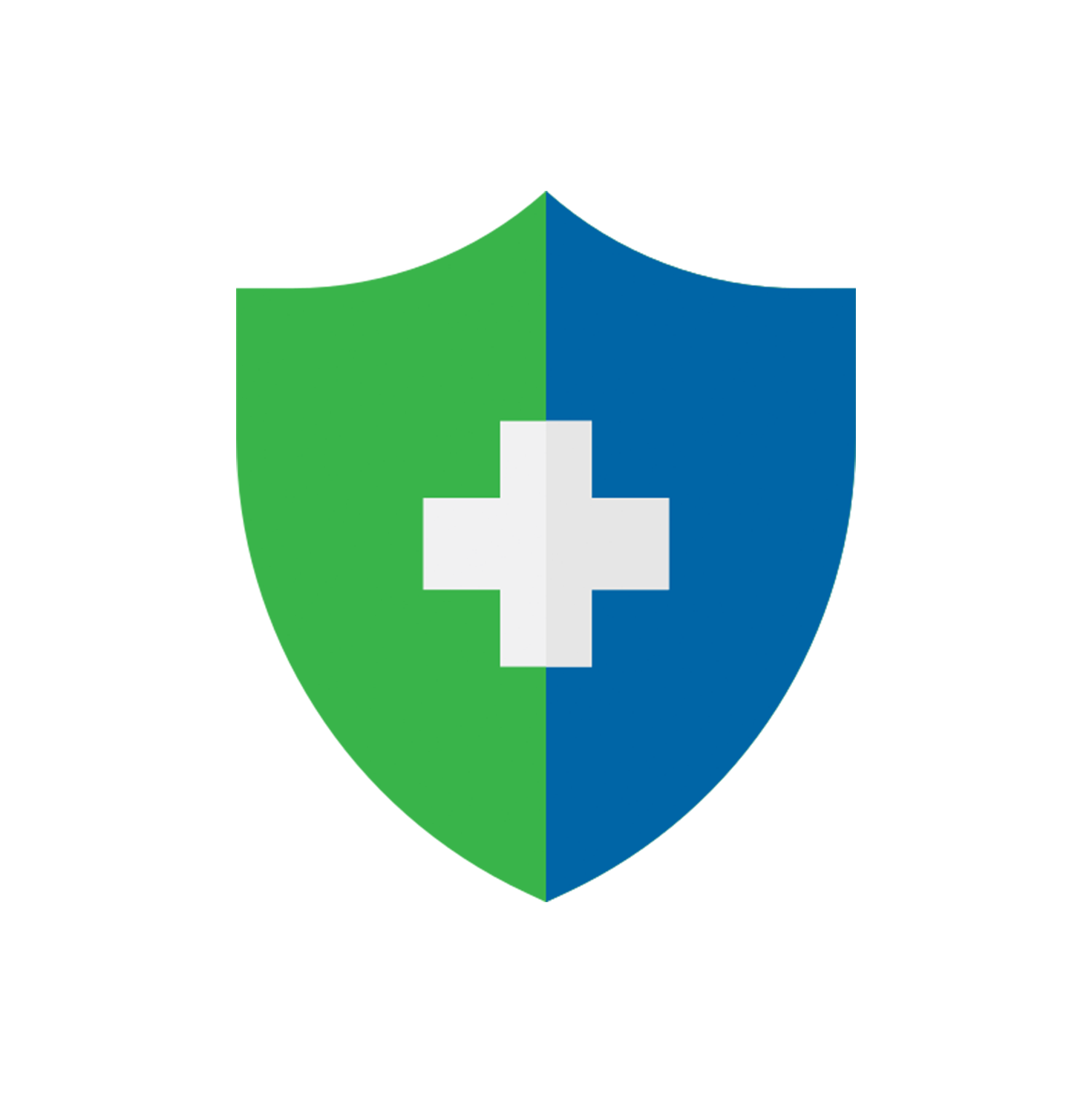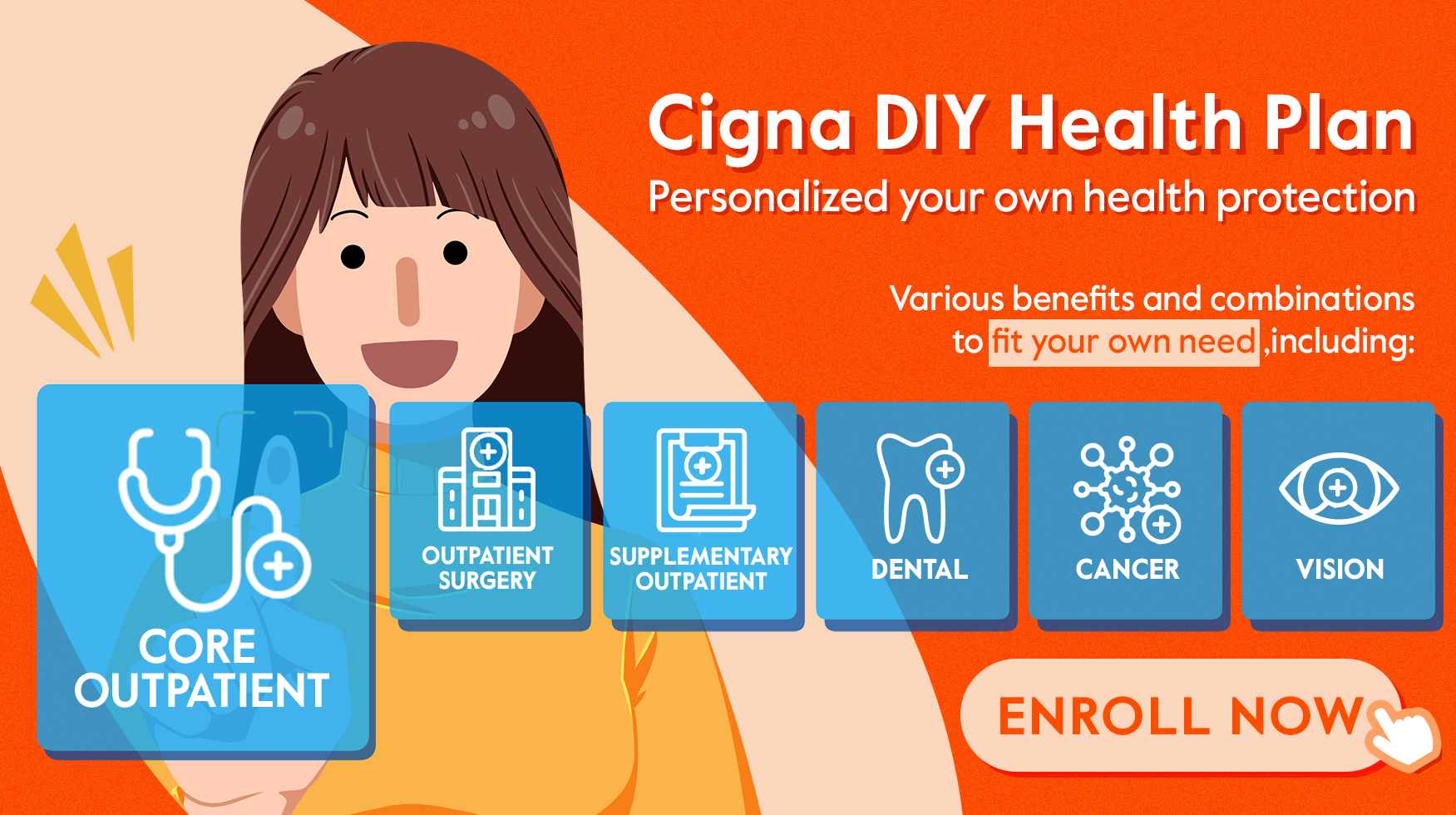Shingles is an infection that causes a painful rash and possibly numerous complications. To know more about the causes and common symptoms, let’s look at this Cigna Smart Health article!
Causes of Shingles
Shingles, also known as zoster or herpes zoster, is a viral infection caused by the varicella-zoster virus, the same virus that leads to chickenpox. After having chickenpox, the virus stays inactive in nerve tissue near your spinal cord and brain. As time goes by, the virus may reactivate as shingles years later due to aging or other factors. When your immunity is low, the inactive virus may attack and damage your nerve system, causing shingles.
Typically, the infection of nerves is limited to one side of your body, resulting in a stripe or belt-like patterned rash (which is generally called “snake” infection in Hong Kong). It most often appears in your back or on the left or the right side of your torso. Rashes may also be found in your arms, feet, or face, where nerves locate. Patients with shingles experience intolerable pain that is usually described as burning and tingling, adversely affecting their normal life.
According to the Society for Hospital Pharmacists of Hong Kong, it is estimated that there are over 400,000 Hong Kong residents experienced shingles before. While in the US, shingles is also a common disease in the country. As per the Centers for Disease Control and Prevention of the United States, shingles is a common disease in the country. About 1 out of every 3 Americans will develop shingles, and an estimated 1 million people get shingles each year in the States.
Stages and Symptoms of Shingles
In general, patients may have the following symptoms at the respective stages below.
- At first, you may feel itchy and pain with a sensation of burning at the site.
- A rash appears in 1 to 3 days.
- The rash then develops into fluid-filled blisters, spreading to a stripe or belt-like pattern.
- The blisters can remain for 1 to 14 days and fill with a serous exudate (pustules or bloody pustules).
- The fluid-filled blisters may break open or crust over. They may develop into scars after drying in around 2 to 3 weeks. You may still feel pain even though your rash has disappeared.
- At the same time, you may also experience fever, headache, and trembling.
High-risk groups include
- The elderly. Individuals aged over 50 years old.
- Individuals with weakened immune systems, especially patients with diabetes, high blood pressure, rheumatoid arthritis, cancer, or AIDS.
- Individuals who are stressed or with insufficient rest.
4 Common Myths about Shingles
| Myths |
Facts |
| 1. Shingles does not affect younger people. |
It is false. Younger individuals can also have shingles, even though it is more commonly observed among the elderly. Inadequate rest and stress can lower your immunity and trigger shingles. Some young celebrities were also reported with shingles. |
| 2. If shingles forms a circular rash around your body, will it kill you? |
No. Shingles usually only involves one nerve on a single side of your body, forming a stripe pattern on your back or waist. A circular rash may be observed occasionally due to infections on both sides of the nerves. However, it does mean that the condition is critical and life-threatening. |
| 3. Is shingles contagious? |
Shingles cannot be transmitted directly. However, open blisters of rashes can spread the chickenpox virus to someone who has never had it or has not been vaccinated by direct contact or touching contaminated objects. Individuals with low immunity and pregnant should take precautions. |
| 4. Shingles will not recur after having once. |
No, shingles can recur. After recovery, you may have more antibodies, but they will decrease gradually. If your immunity gets low, you may have shingles again. |
Complications of Shingles
Shingles may trigger life-threatening complications, including pneumonia and encephalitis. If the viral infection affects your eyes or ears, it may further lead to a permanent loss of sight or hearing loss. Therefore, early intervention is required within 72 hours once a rash is observed. Your doctor may prescribe anti-virus medications to lessen the adverse effects posed on your body.
Besides, around one-fourth of patients experience postherpetic neuralgia (PHN) after recovering from shingles. With PHN, you may feel pain, itching, burning, and tingling for months or years after the rash has healed, causing troubles in your daily life. Postherpetic neuralgia is more common in older patients.
To prevent shingles effectively, individuals aged above 50 years old with a medical history of chickenpox are recommended to receive shingles vaccinations. As Dr Yip Man Lung, Ronald, a specialist in Rheumatology, mentioned in an article, shingles vaccines cannot completely prevent shingles, but they can significantly reduce the risk by 70%. Even though shingles occur, the vaccines can reduce the onset time, pain, and risk of postherpetic neuralgia. According to some international guidelines, shingles patients can receive vaccinations to avoid any recurrence one year after the initial occurrence.
Since shingles vaccines are live attenuated vaccines (with attenuated active varicella virus), individuals with the following conditions are not suitable for vaccination such as weakened immune systems, taking high doses of steroids, receiving chemotherapy, and having tuberculosis. You should consult your doctor before having a jab.
In Hong Kong, some medical centers provide shingles vaccination services to the public. You can see the details and prices in the table below.
| Medical Centers |
Vaccines |
Fees |
| $3,000 per vaccination (2 doses required) |
||
| $5,800 for 2 doses (2 doses separated by 2-6 months) |
||
| $4,752 for 2 doses (2 doses separated by 2-6 months) |
Note: The above charges are subject to changes made by the medical centers. Please contact the respective centers for further details on the fees and uses.
SHINGRIX, produced by GlaxoSmithKline plc, is the shingles vaccine demonstrating over 90% efficacy in clinical trials. It provides strong protection against shingles and neuralgia, the most common complications of shingles. Its effectiveness sustains as long as 4 years. Another vaccine, Zosatavax by Merck & Co., Inc, has an efficacy of around 70% and is less costly. However, people injected with the vaccine may still experience shingles with mild symptoms and a lower chance of neuralgia. Its effects remain for 5 to 7 years.
If you observe any signs of shingles, you should consult your doctor as soon as possible to mitigate your risk for complications and avoid hospitalization. Cigna DIY Health Plan - the one & only DIY health insurance in the market. You can freely choose from various protection benefits to customize your plan to your individual needs. Core Outpatient Benefit covers visits to a network of general practitioners, specialists, and Chinese medicine practitioners along with basic medications. Learn more about the plan here.
Source
- CDC-Shingles (Herpes Zoster)
- Shingles - Symptoms and causes - Mayo Clinic
- Shingles - NHS
- Shingles: What You Should Know
- Shingles: Symptoms, Treatment, and Prevention - Healthline
© Cigna Healthcare 2023
Information provided in this article is intended for health and fitness purposes only and is not intended for use in the diagnosis of disease or other conditions, or in the cure, mitigation, treatment or prevention of disease (see Terms & Conditions for details). Any health-related information found in this article is available only for your interest and should not be treated as medical advice. Users should seek any medical advice from a physician, especially before self-diagnosing any ailment or embarking on any new lifestyle or exercise regime. Any information contained in this article may not be suitable, accurate, complete or reliable. Cigna Healthcare accepts no responsibility for the content or accuracy of information contained on external websites or resources, or for the security and safety of using them. "Cigna Healthcare" and the "Tree of Life" logo are registered trademarks of Cigna Intellectual Property, Inc. in the United States and elsewhere, licensed for use. All products and services are provided by or through operating subsidiaries, and not by The Cigna Group.




